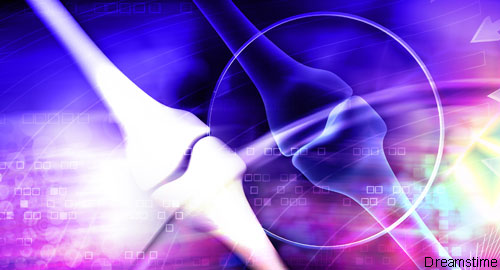 Several studies have identified serum/plasma micro RNAs (miRNAs) associated with osteoporosis, low bone marrow density (BMD) and/or fractures. Additionally, researchers have noted that levels of serum miRNAs can be altered in postmenopausal women by treatment with anti-osteoporotic agents, such as teriparatide or denosumab. New data from Abdullah Y. Mandourah, a graduate student at the University of Liverpool, UK, and colleagues suggest circulating hsa-miR-122-5p and hsa-miR-4516 may serve as diagnostic biomarkers for osteoporosis. They published the results from their miRNA polymerase chain reaction (PCR) arrays online May 30 in Scientific Reports.1
Several studies have identified serum/plasma micro RNAs (miRNAs) associated with osteoporosis, low bone marrow density (BMD) and/or fractures. Additionally, researchers have noted that levels of serum miRNAs can be altered in postmenopausal women by treatment with anti-osteoporotic agents, such as teriparatide or denosumab. New data from Abdullah Y. Mandourah, a graduate student at the University of Liverpool, UK, and colleagues suggest circulating hsa-miR-122-5p and hsa-miR-4516 may serve as diagnostic biomarkers for osteoporosis. They published the results from their miRNA polymerase chain reaction (PCR) arrays online May 30 in Scientific Reports.1
In patients with osteoporosis, the researchers found the downregulation of hsa-miR-122-5p and hsa-miR-4516 in blood samples was significantly associated with the occurrence of osteoporotic fragility fractures and reduced bone mineral density lumbar spine T-score. The two miRNAs were also significantly, differentially expressed between non-osteoporotic controls, osteopenia patients and osteoporosis patients.
The study included 139 patients 40 years and older. Many of the patients with osteopenia and osteoporosis were receiving treatment with bisphosphonates or denosumab. The investigators isolated RNA from serum and plasma samples from the patients and performed quantitative reverse transcription PCR (RT-qPCR) analysis. They first profiled circulating miRNAs from pooled serum samples of the osteoporosis group and non-osteoporotic control group using the Human Serum and Plasma miRNA PCR arrays. From this analysis, they identified 15 up- and down-regulated miRNAs. These differentially expressed microRNAs had over two-fold changes between the osteoporosis female group and the non-osteoporotic female group.
The researchers then validated the identified miRNAs in individual clinical samples using RT-qPCR. They found hsa-miR-122-5p and hsa-miR-4516 were the differentially expressed microRNAs associated with patients with osteoporosis. When they performed a linear regression analysis, they found no significant association between age and the level of circulating microRNAs. Moreover, an ANOVA statistical analysis revealed the exclusion of patients with other diseases from the analysis did not change the significance of the results. Likewise, when researchers removed patients on anti-osteoporosis treatment from their analysis, the removal had a slight effect on the results, but it did not affect the overall significance of the results. Finally, when they removed male participants from the analysis, they found their removal also did not affect the overall significance of the findings.
Although hsa-miR-122-5p could not reliably distinguish between low BMD patients with and without fracture, the levels of hsa-miR-4516 in patients with low BMD and fracture were significantly lower than the levels in patients with low BMD without fracture and non-osteoporotic controls. The investigators next sought to determine if these two miRNAs have diagnostic value for osteoporosis. They found hsa-miR-122 did not, but that acceptable diagnostic values for the levels of hsa-miR-4516 in clinical samples of patients with osteoporosis did exist.
